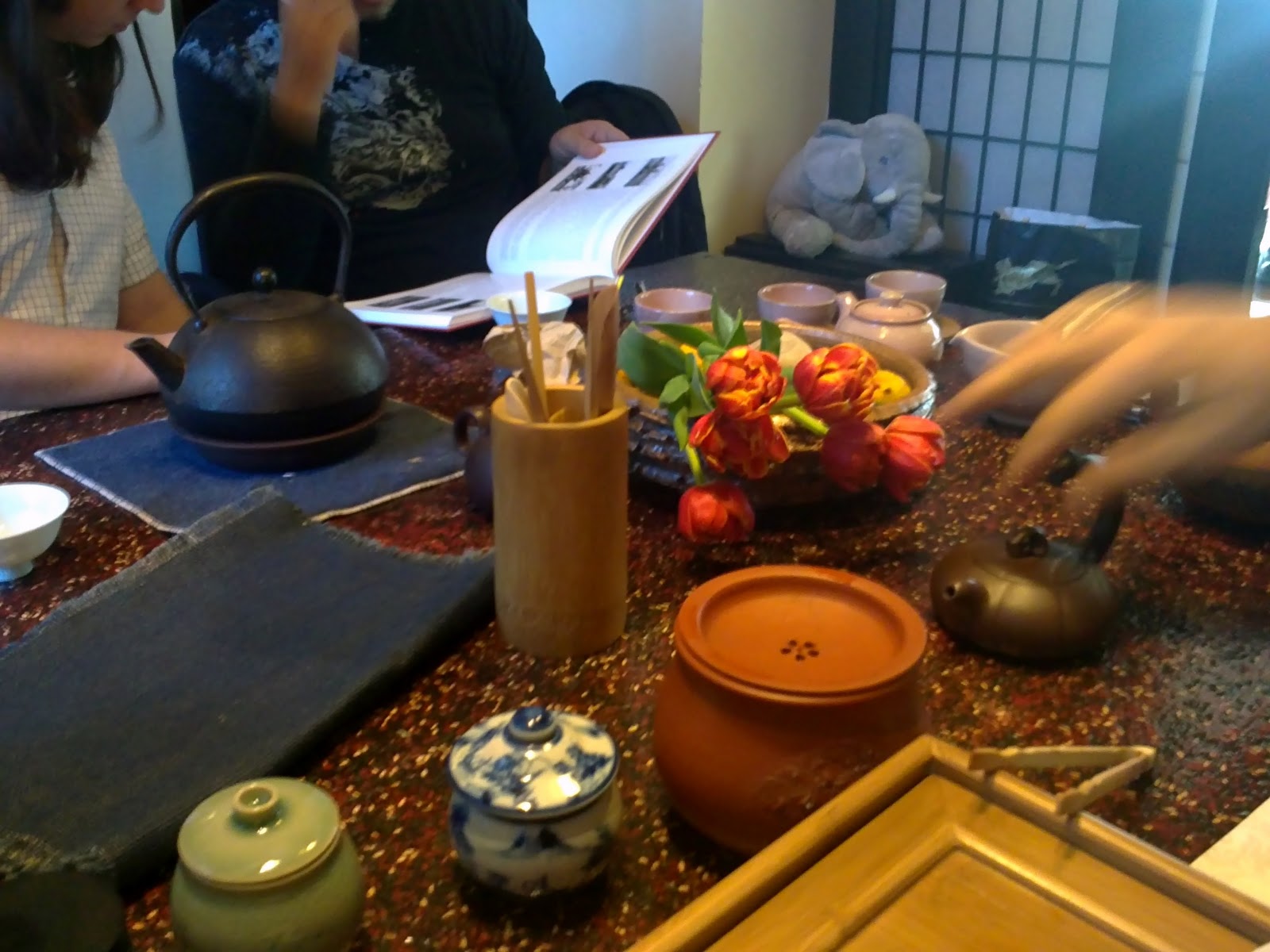Tea socialising in Poland
Posted on 25 October 2010
My tea socialising in Poland continues. (See here and here for previous events). Upon a visit to Poland of a fellow tea lover and blogger, Sayama, we gathered in the private room of a Korean/Japanese restaurant to samples through some teas.
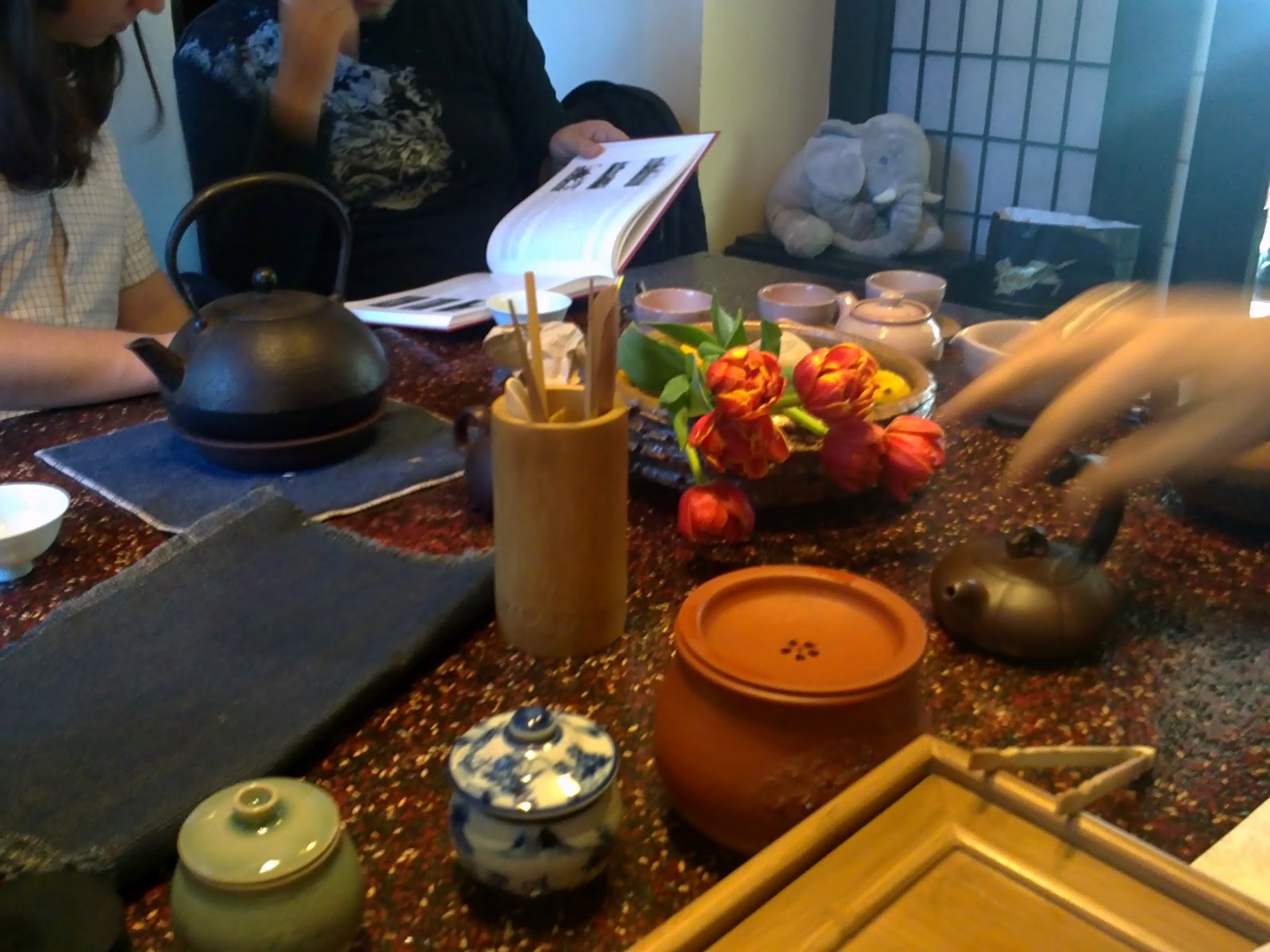 |
| Tea sessions at restaurants are always messy… |
An impressive line-up of teas was provided by Sayama. (I had to leave after two hours and only sampled five or six, but the party continued). Some purchased in Japan including from leading connoisseur shop Kaburagi-en, while those from Korea, China and Vietnam were selected (and often also harvested) by Sayama himself.
Several of these teas came from small non-commercial batches, and were really interesting to taste. We had a mysterious Chinese green named Shu Cheng Xiao Lan Hua (舒城小蘭花) on which I know little else than it’s from Anhui province and tasted like a very good Longjing. We also tried a pair of Korean teas: a green sejak grade from Hwagae and a Balhyocha (yellow tea; see here for a very thorough discussion of what this is) from a monastery on Jiri mountain.
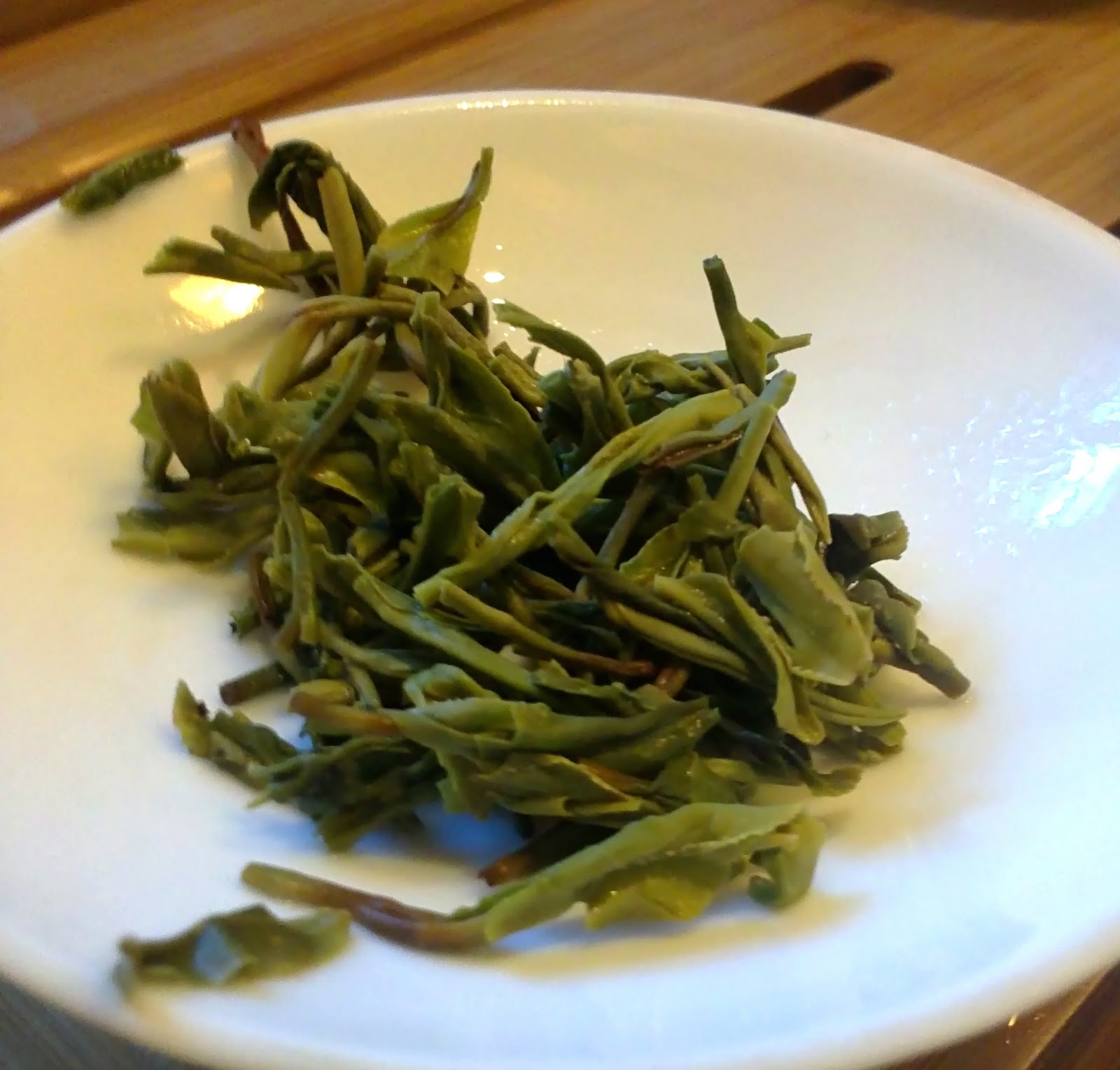 |
| Nice leaves to this green sejak from Korea. |
I much looked forward to tasting the latter. But brewing tea properly in a restaurant is no easy task. I had brought my own gaiwan and tea cups but couldn’t control many other variables, most crucially, the quality and temperature of the water. Brewing at home, these things are easy to control, but at a restaurant table, speaking to three people simultaneously, with approximate dosage, the results were a little erratic. Anyhow it was the most oxidised yellow tea I’ve had from Korea; its profile was very close to an Oriental Beauty from Taiwan: full of dried fruits, raisins and spices. It’s interesting how consistent Korean teas are: no matter what the style and how it’s brewed, there’s always that recognisable nutty character.
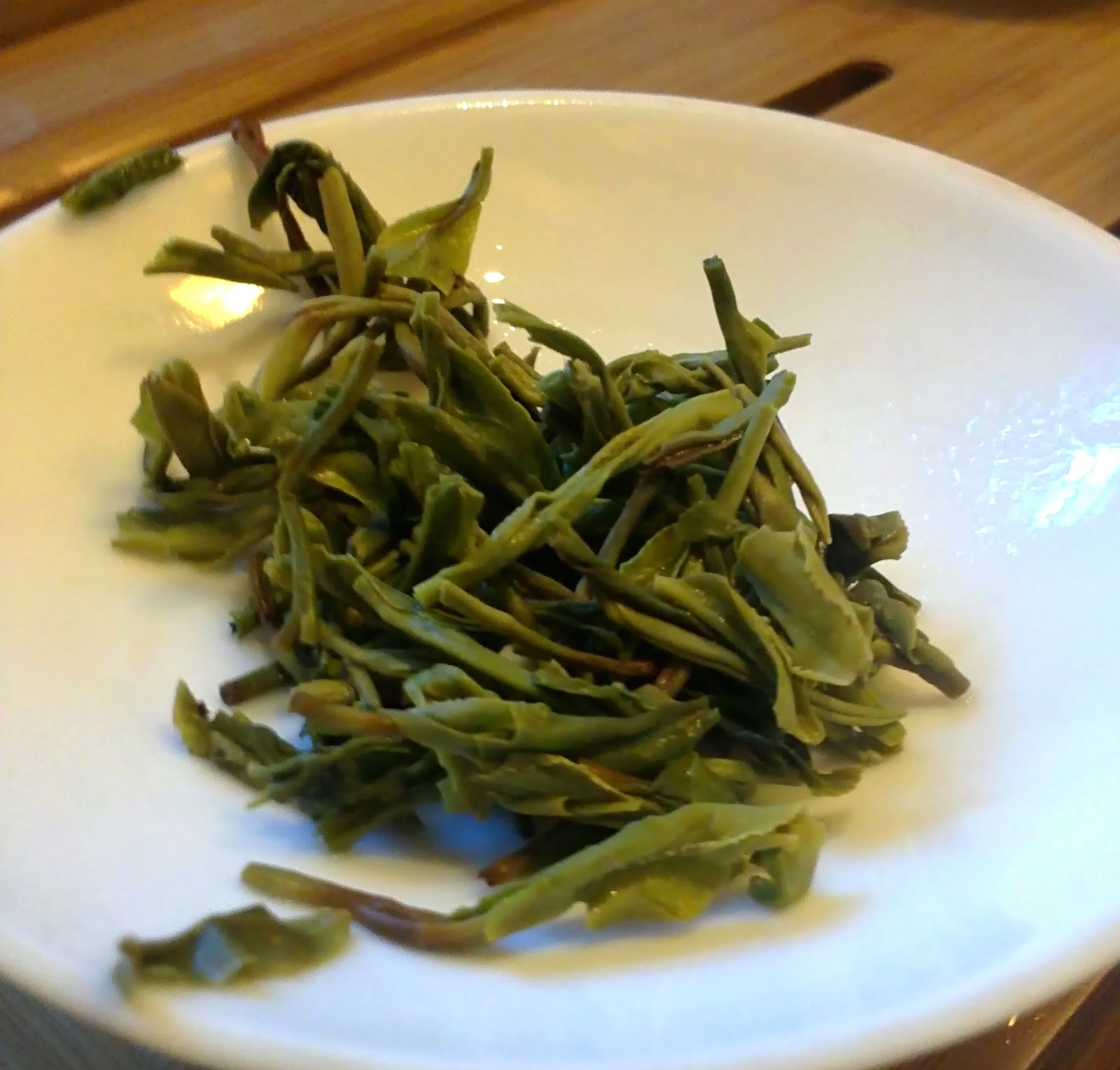 |
| This terrible mobile phone photo is the only one I managed to take of the Jiri-san Balhyocha. |
We finished with a 2010 competition sencha from Kaburagien (it’s the second tea down on this page) which was mightily impressive, with a lovely balance between umami and sweetness, and stellar quality to the leaves. An enjoyably and instructive tea afternoon.
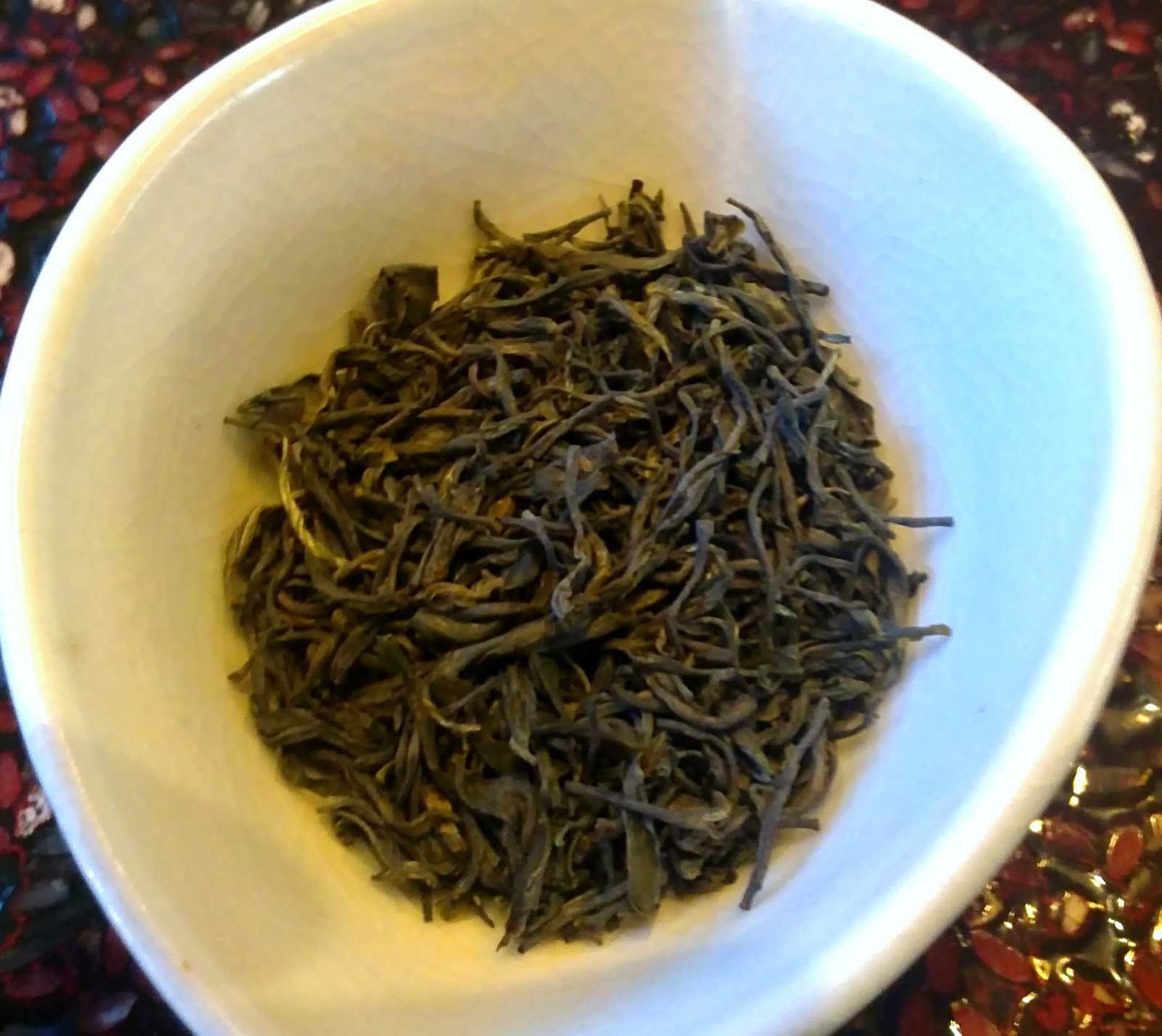 |
| We also had a look at some tea items, including this antique yixing pot: so dirty inside it’s no more good for actual brewing. |
All teas were provided by fellow tea lover Sayama. Private room and hot water provided free of charge by the Kiku restaurant in Warsaw.


